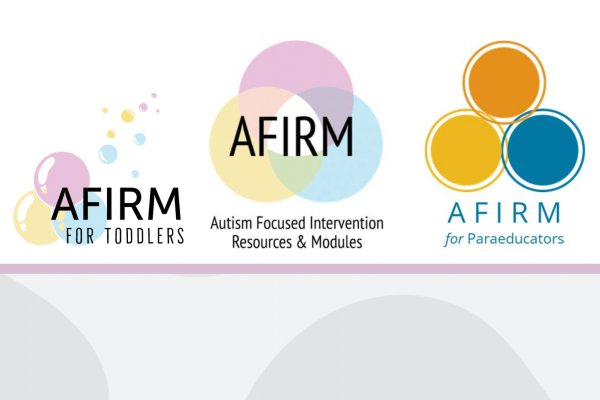
AFIRM launches redesigned website
For the past 10 years, members of the autism team, including Ann Sam, PhD, Victoria Waters, MEd and Sam Odom, PhD, at the UNC Frank Porter Graham Child Development Institute (FPG) have provided Autism Focused Intervention Resources & Modules (AFIRM), offering evidence-based practices (EBPs) to support learners on the spectrum from birth to 22 years of age. To celebrate this decade milestone and April’s Autism Acceptance Month, the AFIRM team launched its new website this week.
Originally developed from the 2014 National Professional Development Center (NPDC) on Autism EBP report, AFIRM freely provides resources and modules that educators, related service providers, and families can use with children and youth on the spectrum. Based on the 2020 National Clearinghouse on Autism Evidence & Practice (NCAEP) EBP report, these resources and modules were expanded with five new practices. AFIRM also offers modules designed for paraeducators and families and caregivers of toddlers.
AFIRM for Paraeducators professional development program is designed to support special education teachers in guiding paraeducators in using practical, easy-to-follow practices based on proven research. Paraeducators are able to gain the skills to use evidence-based practices, helping students receive the best support possible for their learning and development.
AFIRM for Toddlers, developed in collaboration with the Early Childhood Technical Assistance Center (ECTA), offers modules to support early interventionists working with caregivers of toddlers. With clear guidance and real-world applications, AFIRM for Toddlers empowers early childhood practitioners and caregivers to create meaningful learning experiences and promote essential skills in toddlers.
Each AFIRM module includes practical strategies, real-life case studies, checklists to ensure best practices, and interactive learning activities. Widely recognized and highly cited, AFIRM’s resources deliver a user-friendly way to learn and apply proven autism support strategies with confidence. Resources include EBP brief packets, data sheets, planning worksheets, and step-by-step guides.
Within the new website, the modules and resources are more accessible and more readily available since they are no longer locked behind a login. Another welcome change for AFIRM users is that the free certificate of completion now shows the user’s post-assessment score.
AFIRM recently passed the milestone of reaching 400,000 users worldwide. These individuals hail from 203 countries, including all 50 US states and territories. AFIRM modules and resources have been translated into Mandarin, Arabic, Spanish, Italian, Korean, Swedish, and Turkish. Users—which include more than 86,000 paraeducators, more than 80,000 special education teachers, nearly 75,000 university students, and more than 23,000 general education teachers—have accessed AFIRM more than 73 million times.
“We have research that shows that all these modules are valid,” said Victoria Waters, MEd, an educational consultant at FPG who led the website redesign. “Everybody who uses AFIRM modules loves them and finds them really useful in their work. We’re proud of our work and happy that we can continue making these resources free and easily available to all.”
